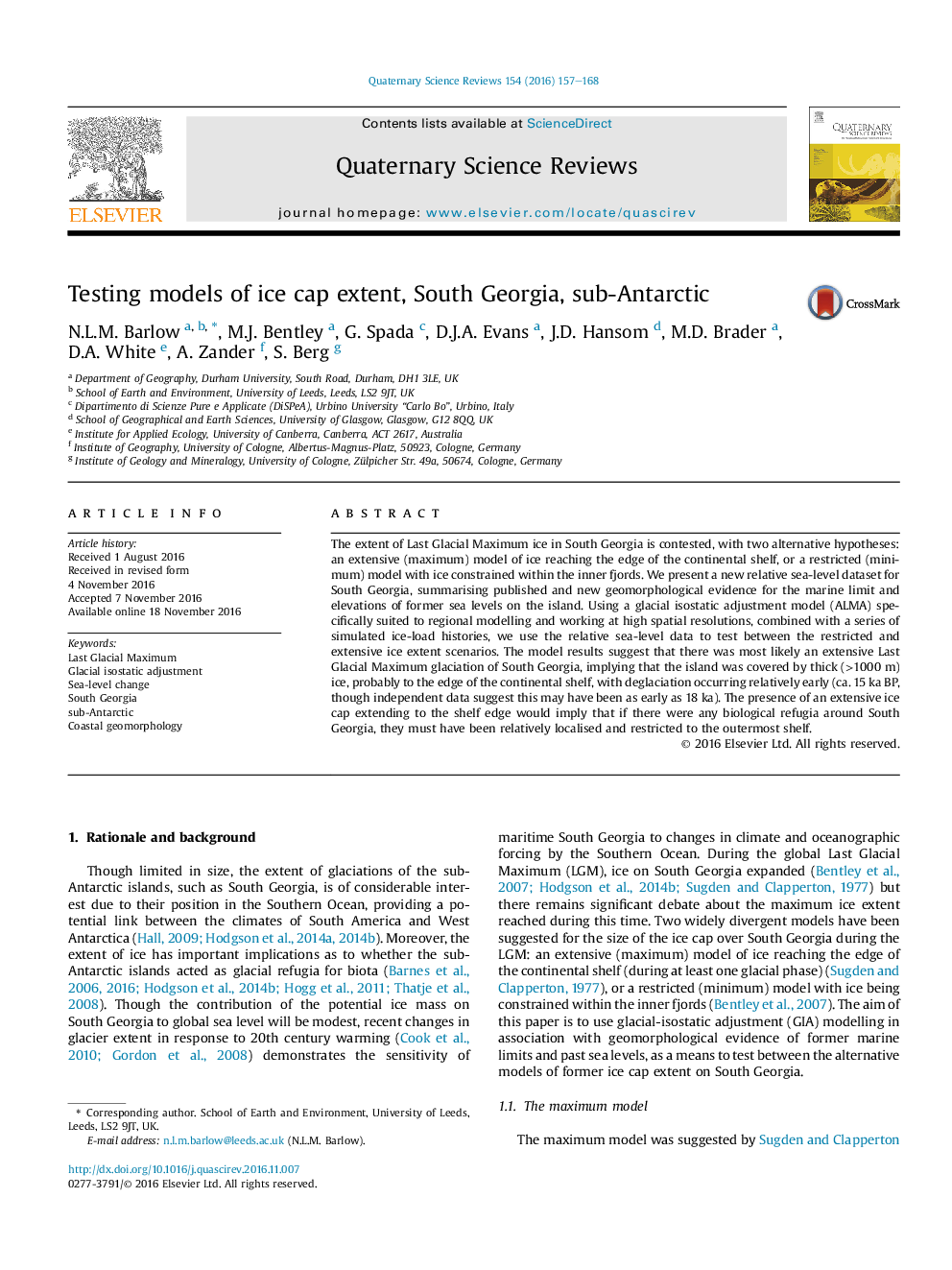| Article ID | Journal | Published Year | Pages | File Type |
|---|---|---|---|---|
| 6445358 | Quaternary Science Reviews | 2016 | 12 Pages |
Abstract
The extent of Last Glacial Maximum ice in South Georgia is contested, with two alternative hypotheses: an extensive (maximum) model of ice reaching the edge of the continental shelf, or a restricted (minimum) model with ice constrained within the inner fjords. We present a new relative sea-level dataset for South Georgia, summarising published and new geomorphological evidence for the marine limit and elevations of former sea levels on the island. Using a glacial isostatic adjustment model (ALMA) specifically suited to regional modelling and working at high spatial resolutions, combined with a series of simulated ice-load histories, we use the relative sea-level data to test between the restricted and extensive ice extent scenarios. The model results suggest that there was most likely an extensive Last Glacial Maximum glaciation of South Georgia, implying that the island was covered by thick (>1000Â m) ice, probably to the edge of the continental shelf, with deglaciation occurring relatively early (ca. 15 ka BP, though independent data suggest this may have been as early as 18 ka). The presence of an extensive ice cap extending to the shelf edge would imply that if there were any biological refugia around South Georgia, they must have been relatively localised and restricted to the outermost shelf.
Keywords
Related Topics
Physical Sciences and Engineering
Earth and Planetary Sciences
Geology
Authors
N.L.M. Barlow, M.J. Bentley, G. Spada, D.J.A. Evans, J.D. Hansom, M.D. Brader, D.A. White, A. Zander, S. Berg,
